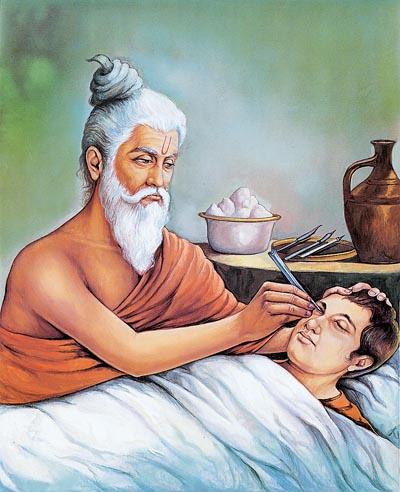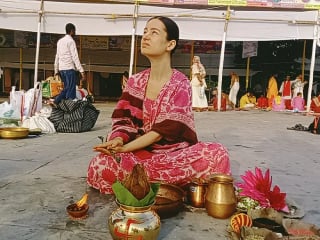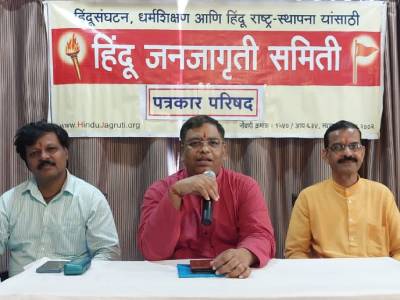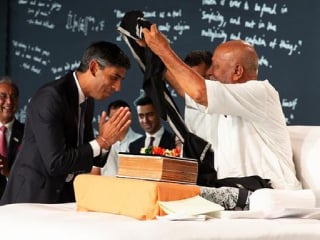Discussion is vital, don’t dismiss all ancient science as myth
The campaign to denigrate everything Indian, past and present, is a false patois that is intended to demoralise and this is unacceptable.
Every opinion, however outlandish, warrants an examination in a free society. Healthy scepticism is a positive attribute that reflects an open mind but vulgar derision demonstrates prejudice. The Indian History Congress’ censure of Prime Minister Narendra Modi’s statement regarding the transposition of an elephant head on to Ganesha’s body falls in the second category.
Instead of denouncing the PM’s comment, the naysayers must try to find out whether ancient Indians possessed a sophisticated knowledge of plastic surgery. Yes, if you believe standard medical textbooks, scientific journals and opinions of practising plastic surgeons.
A History of Organ Transplantation (University of Pittsburgh Press, 2012) by David Hamilton with a foreword by Thomas Starzl, the father of modern liver transplant, asserts: “……. manuscripts from the Indian subcontinent in the 6th century BCE describe carefully conducted plastic surgery” (Introduction, Page XV).
An article — Sushruta: father of plastic surgery — in Annals of Plastic Surgery (July 2014) (Champaneria et al July 2014; Volume 73: p1: p 2–7) reiterates the predominance of Indian medicine: “Sushruta, who lived sometime between 1000 and 800 BC, should be credited as the Father of Plastic Surgery.” This designation stems from his novel method of nasal reconstruction (rhinoplasty) called the ‘‘Indian method’’ for which the basic principles of nasal reconstruction and in turn, flap surgery, remain true today.
Other sources concur: The website of the Royal Free Hospital London (http://bit.ly/1wPFZsA) states: “Plastic surgery had to wait until the late 18th century for the next significant advance — the skin graft. And ironically the breakthrough came from rediscovering a procedure developed in ancient India…The severe-looking skin graft procedure was rediscovered in an ancient book called the Sushruta Samhita — dating back to 8th century BC.”
A perusal of the Sushruta Samhita reveals that it is a serious scientific document, not mythology. It may be an exaggeration to claim that everything good and great originated from India. By the same token the campaign to denigrate everything Indian, past and present, is a false patois that is intended to demoralise and this is unacceptable.
Discussion is vital for intellectual refinement. Unfortunately the debate has been reduced to an ideological slanging match sans facts and logic. We need to inject sanity into this exchange: An objective evaluation that draws an authentic picture of our past.
Source : Hindustan Times
Indian Science Congress : Papers being presented on Ancient Sciences through Sanskrit

NEW DELHI – Indians had realized the importance of anatomy for accurate surgery and were dissecting the human body long before the Greeks, a paper to be presented in the 102nd Indian Science Congress says. There are many other such papers, lined up for presentation at the Congress, asserting the significance of exploring Hindu epics to understand the ancient world.
These papers, based on translation and interpretation of various historical documents and texts in Sanskrit, some of which were also published, say ancient Indians followed scientific principles for building houses and aircraft construction, and developed 20 types of sharp instruments and 101 types of blunt instruments required for surgery made of iron, many of which resemble modern surgical instruments.
“So far, Sanskrit is essentially considered a language of religion and philosophy, but the fact is that it also talks about science including physics, chemistry, geography, geometry etc. There is a lot of scientific information available in these texts and historical documents that we want to explore,” says Gauri Mahulikar, associate professor and head of department of Sanskrit at Mumbai University.
Mahulikar is the coordinator for the symposia ‘Ancient Sciences through Sanskrit’ during the Indian Science Congress, hosted by Mumbai University from January 3rd to 7th. The session is scheduled to be inaugurated by Union minister of state Prakash Javadekar.
The symposia and the papers could be of significance as it comes at a time when the BJP-led government is keen to make Sanskrit a compulsory language in school curriculum of Kendriya Vidyalayas.
The papers reveal ancient Indians performed complicated medical procedures such as cranial, ophthalmic and even plastic surgeries. They even extracted dead fetuses from wombs and even removed live fetuses from dead mothers, one of the papers by Dr Ashwin Sawant, an ayurvedic physician, claims.

Sushruta – Father of Cosmetic Surgery
“Susrut Sahita is the first text of surgery, created not later than 1500 BC in India. References of advanced surgeries are also found in Rigveda considered as first text of universe, created not later than 6000 B.C,” an extract from Dr Sawant’s paper says. According to the paper, Indian method of human dissection seems better, since it could make visible, minute structures lying just beneath the skin, which is not possible, even in modern methods of dissection.
Do Read :
- Great Indian Hindu Sages who revolutionised the field of Science
- Worth Reading : Plastic Surgery in Ancient Hindu India
- Sanatan Hindu Dharma conducive to proper development of science
- 4,000 Year Old Vishnu Statue Discovered in Vietnam
Similarly, from the many historical documents found it is evident that scientist-sages Agastya and Bharadwaja had developed the lore of aircraft construction. A paper, to be presented by retired principal of pilot training centre Anand Bodas and Ameya Jadhav, lecturer at Swami Vivekanand International School and Junior College claims aviation technology in ancient India is not just a myth.
Another paper reveals the scientific principles that were followed in ancient India in building structures.
According to Mahulikar, among ancient Sanskrit texts, there is a separate book for every science. While some of these texts are printed, many of these texts have already been translated into English and Hindi.
Source : The Times of India







